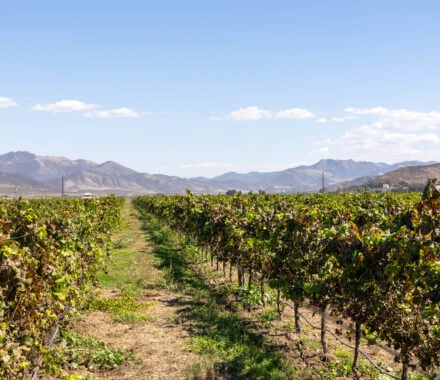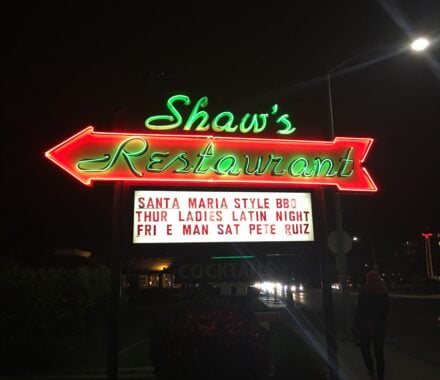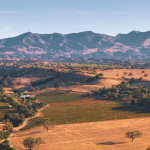From Memphis to Texas, the United States has a number of booming barbecue scenes—and each region has its own unique version of what constitutes barbecue done right. From saucy to smokey and ribs to brisket, barbecue varies greatly from city to city, with each locale offering up its own distinct, finger-lickin’ flavor. Today, then, we’re diving deep into different styles of barbecue and, most importantly, what makes Santa Maria Style unique. You ready for a tasty tour? Grab your forks and let’s go!
Memphis Barbecue
Defining Feature: Dry Ribs
Considered one of the four predominant regional barbecue styles of the U.S., Memphis barbecue is all about pork (mainly ribs and shoulders). To be considered Memphis style, it has to be slow-cooked in a pit—though, there’s some room for variation when it comes to preparation: ribs can either be prepared “dry” using dry-rub (dry ribs are a staple of Memphis style barbecue) or “wet” slathered in Memphis barbecue sauce (which tends to be sweet, tangy, and little thinner than classic barbecue sauce). Of the two, dry preparation tends to be the most popular.
Kansas City Barbecue
Defining Feature: Barbecue Sauce
Kansas City barbecue is less about the cut of meat and more about the sauce (in fact, it’s all about the sauce). The signature Kansas City barbecue sauce is a thick-and-sweet tomato-based sauce (and it’s probably what you think of when you imagine classic barbecue sauce). While there are a number of variations on Kansas City Barbecue sauce, key components include both a sweet flavor (often from molasses) and spicy notes. In Kansas City, just about any meat is considered fair-game when it comes to grilling—pork, chicken, beef, lamb, sausage, “burnt ends” and even fish—just as long as it’s served up with their signature Kansas City barbecue sauce.
Texas Barbecue
Defining Feature: Beef that “falls off the bone”
Texas barbecue is all about the beef (it is Texas, after all). Texas actually derived its iconic beef brisket preparation method from German and Czech settlers who lived in the Lone Star State in the early 19th century (butchers would smoke leftover meat that hadn’t been purchased so it could be saved and stored). While there are four distinct types of barbecue within Texas—East, Central, West, and South—the Central and East Texas styles are the most well known. East Texas style barbecue involves meat that’s slow-cooked over hickory wood until it falls right off the bone. Central Texas barbecue uses meat that’s rubbed with only salt and pepper and then cooked over indirect heat. Because it’s so tasty on its own, sauce isn’t considered necessary—but, if it’s requested, it’s typically served on the side.
Carolina Barbecue
Defining Feature: Pork, pork & more pork.
If it’s Carolina barbecue, it’s pork—shoulders, thighs, ribs, or even the entire pig. It can be served pulled, shredded, chopped, or sliced and is often prepared with a spice-rub before smoking (and moistened with vinegar while smoking). While locals in both Carolinas agree that it’s all about the pork, there are some major differences between North and South Carolina when it comes to sauces: North Carolina prefers a vinegar-and-tomato-based barbecue sauce, while South Carolina opts for a distinct mustard-based barbecue sauce typically referred to as “Carolina Gold.”
Santa Maria Barbecue
Defining Feature: Red Oak & Santa Maria Seasoning
We’ve saved the best for last! (Ok—we may be a little biased.) Santa Maria Style barbecue has a rich history and roots that date back to the 1800’s when, after cattle round-ups, local ranchers would thank their neighbors and vaqueros (cowboys) by preparing a Spanish-style feast that consisted of meat slow-roasted over the flames of a red oak fire, served with a side of pinquito beans and fresh green salad. While the tradition has since grown to include tri-tip and even tri-tip sandwiches, one defining feature has remained the same: to be considered Santa Maria Style barbecue, it has to have been cooked over red oak, and preferably rubbed with Santa Maria seasoning—a simple-yet-flavorful blend of salt, pepper, and garlic salt. Today’s classic Santa Maria Style barbecue plate typically includes: red-oak roasted meat, pinquito beans, fresh green salad, and grilled French bread dipped in sweet melted butter.
Overall, what makes Santa Maria Style barbecue so distinct is its unique use of local red oak—it’s a wood that’s native to our Valley and one that gives sirloin and tri-tip alike an unmistakably irresistible smoky flavor. Is your mouth watering yet? (We hope so.) Check out all of our iconic barbecue restaurants here, and start planning a trip to our Valley!
***
In Santa Maria Valley, there’s so much to do from here. Hit the road and explore it all with our 24 hiking trails, 34 tasting rooms, seven unique AVAs, 13 beaches, and a growing selection of local breweries, all within a beautiful 30-minute drive. There is no need to venture far if you are looking for sand dunes, cycling and authentic Santa Maria Style dining. You’ll find it’s the perfect home base, where you can eat, drink and do more for less.



